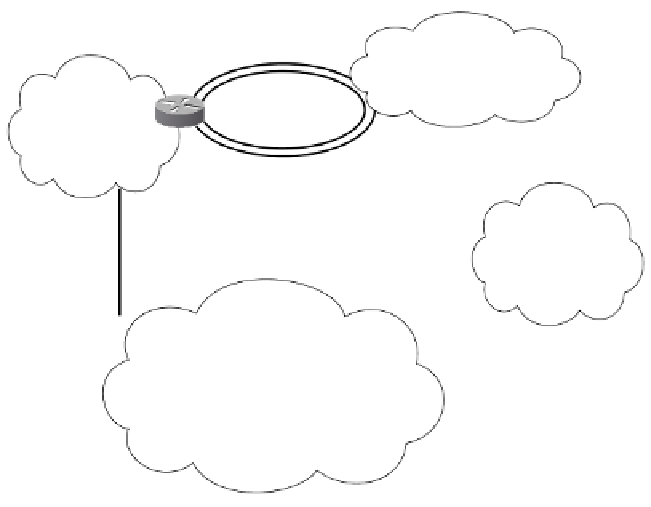Information Technology Reference
In-Depth Information
Figure 9-6
Transit Theft Through Default Routing
Default
ISP 2
ISP 1
Tr ansit
ISP 4
ISP 3
The purpose of the NAP router is to exchange customer prefixes with local peers. The NAP
router does not need to know full routing tables, because transit services are not provided
on a NAP router. The only traffic received inbound should be traffic destined for the ISP's
customers.
Third-Party Next Hop
The third-party next-hop method is used to achieve traffic manipulation in the opposite
direction of pointing default. Instead of offloading traffic outbound, the ISP attempts to
redirect traffic inbound over a private peering link elsewhere to reduce traffic on the transit
and backbone links. Because transit is more expensive than peering, this manipulation can
save the unethical ISP significant transit and circuit costs. In Figure 9-7, the unethical ISP
is ISP1.
In Figure 9-7, ISP1 BGP peers with ISP3 at the NAP. At this same NAP is ISP2, with which
ISP1 is not peered. The BGP next-hop attribute is set to ISP2's interface address for prefixes
advertised to ISP3 from ISP1. A private peering connection exists between ISP1 and ISP2.
The traffic from ISP3 to ISP1 is sent to ISP2 and then is delivered to ISP1 over the private
peering connection.




























